|
|
|
About us
Alhambra Granada
Hotels
Maps
Nerja
Nerja caves
Frigliana |
| Nerja Caves at Maro Albeniz "Leyenda)" |
| Cueva de Nerja, Maro, Nerja 29787 Tel: 952 529 520 |
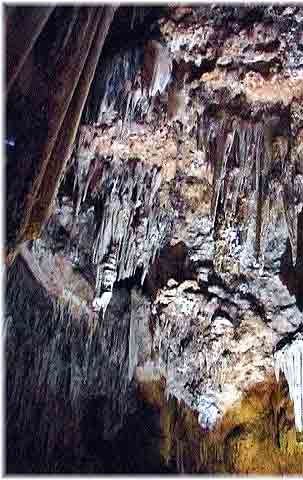 |
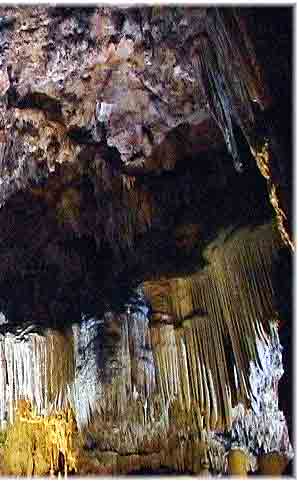 |
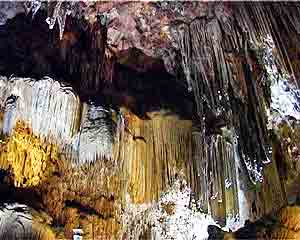 |
LOCATION Situated in the Andalusia region of La Axarquia, between the Acantilados de Maro Natural Par and the Tejada and almijara Sierras National Game Reserve, about 5 km from Nerja and 1 km from the old municipal district of Maro. Access is from the N340. The caves are open from 10:00 to 14:00 and 16:00 to 18:30. In July and August, the evening visiting hours are from 16:00 to 20:00 |
|
Length of the cavity: 7 219,28 m. Levels spread: 67,95 metres Total Surface: 35 484 m2 Total Volume: 264 379,33 m3 |
|
Discovered by schoolboys hunting for bats in 1959, the collection of caverns was soon recognised as being one of the most important cave systems in the country. They provided archaeological proof that Cro-Magnon lived in these parts more than 20,000 years ago and the rupestrian paintings discovered there depicting dolphins are the only known examples from the Upper Palaeolithic era. |
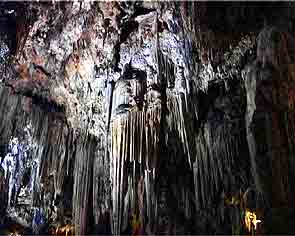 |
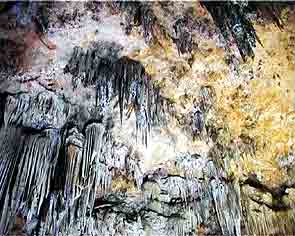 |
|
|
The Chamber of Ghosts - Sala de Los Fantasmas |
||
|
It takes about an
hour to wander round all the caverns, more if you like caves. And these are
quite special. Apart from good lighting , the biggest impression
is made by the 60 metre high stalactic pillar in the furthest chamber. You can also see, high in the end
wall, a red light which marks the entrance to another bigger system still
unopened to the public. |
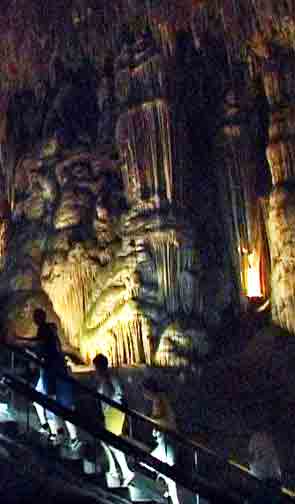 |
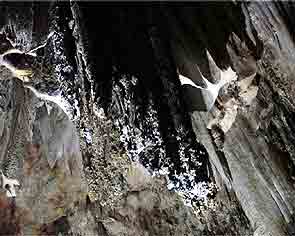 |
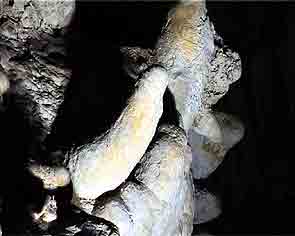 |
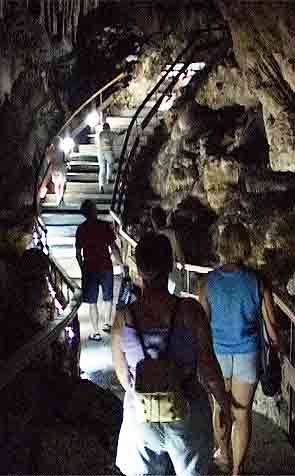 |
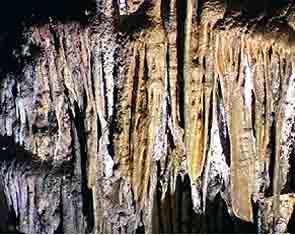 |
|
| . | ||
 |
|
Tecky stuff!
|
|
About us
Alhambra Granada
Hotels
Maps
Nerja
Nerja caves
Frigliana |
|
View some of our other holiday destination
videos |
|
Visit one of our other
Holiday destinations |
|
This website designed &
hosted by |